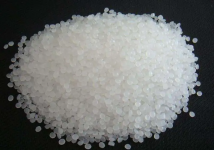read: 460 time:2025-06-04 02:01:08 from:化易天下
When comparing the acidity of carboxylic acids and phenols, one question frequently arises: Why is carboxylic acid stronger acid than phenol? Understanding the fundamental chemical structures and the behavior of these compounds in different environments is crucial to answering this question.
The primary reason why carboxylic acid is stronger acid than phenol lies in their structural differences and how these structures stabilize the conjugate base after deprotonation. Carboxylic acids have the functional group -COOH, while phenols have a hydroxyl group -OH attached to an aromatic ring.
Upon losing a proton (H⁺), a carboxylic acid forms a carboxylate ion (R-COO⁻), whereas a phenol forms a phenoxide ion (Ar-O⁻). The carboxylate ion is resonance-stabilized, with the negative charge delocalized equally over the two oxygen atoms. This extensive delocalization leads to a more stable conjugate base, which in turn makes it easier for carboxylic acids to donate a proton, thus increasing their acidity.
On the other hand, the phenoxide ion formed from phenol has the negative charge localized primarily on the oxygen atom, with some delocalization into the aromatic ring. However, this resonance stabilization is less effective compared to the carboxylate ion, resulting in a less stable conjugate base and, therefore, a weaker acid.
Another significant factor contributing to the acidity difference is the inductive effect. In carboxylic acids, the carbonyl group (C=O) exerts an electron-withdrawing effect through the sigma bonds, which further stabilizes the carboxylate ion by reducing the electron density on the oxygen atoms.
Phenols, however, do not have a similar electron-withdrawing group attached to the oxygen. Although the aromatic ring does participate in resonance, it does not provide the same level of stabilization. As a result, phenols are less acidic because the phenoxide ion is not as effectively stabilized by resonance or inductive effects.
The environment or solvent in which these compounds are dissolved can also affect their relative acidity. In aqueous solutions, carboxylic acids are more likely to donate a proton due to their ability to form stronger hydrogen bonds with water molecules. These hydrogen bonds further stabilize the carboxylate ion, making carboxylic acids even stronger acids in water.
Phenols can also engage in hydrogen bonding, but the effect is less pronounced compared to carboxylic acids. The phenoxide ion does not benefit as much from the solvent's stabilizing effects, contributing to its lower acidity.
The acidity of a compound is often quantitatively expressed using its pKa value, which is the negative logarithm of the acid dissociation constant (Ka). The lower the pKa value, the stronger the acid. Carboxylic acids typically have pKa values ranging from 4 to 5, while phenols have pKa values around 10. This significant difference in pKa values further reinforces the explanation of why carboxylic acid is stronger acid than phenol.
In summary, the question of why carboxylic acid is stronger acid than phenol can be attributed to several factors, including resonance stabilization, the inductive effect of the carbonyl group, and the ability to form stronger hydrogen bonds in aqueous solutions. These combined effects result in a more stable conjugate base for carboxylic acids, making them significantly more acidic than phenols. Understanding these chemical principles provides a comprehensive explanation of the differences in acidity between these two important classes of organic compounds.

Jincheng Petrochemical's 300000 ton polypropylene plant successfully trial production, 2024 polypropylene market analysis

The ABS market remains sluggish, what is the future direction?

Market differentiation of bisphenol A intensifies: prices rise in East China, while prices generally decline in other regions

The production method and process flow of silicone acrylic lotion, and what are the common raw materials